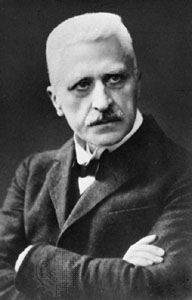
The Idea of the Holy
The Idea of the Holy: An Inquiry into the Non-Rational Factor in the Idea of the Divine and its Relation to the Rational (German: Das Heilige. Über das Irrationale in der Idee des Göttlichen und sein Verhältnis zum Rationalen) is a book by the German theologian and philosopher Rudolf Otto, published in 1917. It argues that the defining element of the holy is the experience of a phenomenon which Otto calls the numinous. The book had a significant influence on religious studies in the 20th century.
Background[edit]
Rudolf Otto wrote that the thought of Friedrich Schleiermacher was a major influence on his views presented in The Idea of the Holy. Other influences include Martin Luther, Albrecht Ritschl, Immanuel Kant and Jakob Friedrich Fries.[1]: 13
Reception[edit]
The Idea of the Holy was first published in German in 1917 and the first English translation was published in 1923. It is Otto's most famous and influential book and its conception of the holy had a significant impact on the history of religions and other disciplines of religious studies. According to the scholar Douglas Allen, the book's two major contributions were its emphasis on "an experimental approach, involving the description of the essential structures of religious experience" and an "antireductionist approach, involving the unique numinous quality of all religious experience".[1]: 13 Prominent 20th-century scholars who have praised the book and acknowledged its influence on their work include Edmund Husserl, Karl Barth, Joachim Wach, Gerard van der Leeuw and Mircea Eliade.[1]: 13